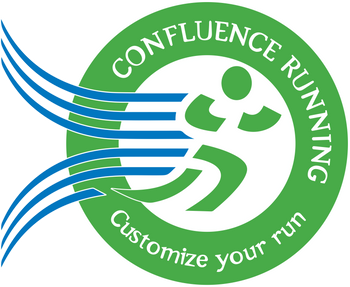Mastering SMART Goals: A Step-by-Step Guide to Achieving Fitness and Wellness Success

Goal Setting for Fitness and Wellness: A Comprehensive Guide
Goal setting is a foundational aspect of personal growth and success, especially in fitness and wellness. It provides direction, motivation, and a clear path toward achieving your desired outcomes. This guide explores effective strategies for creating and achieving meaningful goals, focusing on the SMART goal-setting framework and breaking down goals into actionable steps.
What is a Goal?
A goal is the desired outcome of an intention, whether in your career, academics, lifestyle, or fitness journey. In the context of health and wellness, goals might include improving nutrition, enhancing fitness levels, or leading a more balanced lifestyle. Setting clear and actionable goals is essential for sustained progress.
According to research from the Dominican University in California, writing down your goals and clarifying them increases your likelihood of success by 42%. To harness this advantage, we’ll focus on using the SMART framework—an acronym for Specific, Measurable, Attainable, Realistic, and Timely.
Start Reading: How Do Plyometrics Aid in Adaptations? | Concept of Overload | Circuit Training
The SMART Framework for Goal Setting
Specific
A goal must be clear and concise. Avoid vague objectives like “I want to lose weight.” Instead, identify the exact aspect you wish to improve, such as “I want to lose 5 lbs of fat.” This specificity helps you visualize your goal and align your efforts accordingly.
Measurable
Quantify your goals to track progress effectively. For example, “I want to lose 5 lbs of fat” or “I want to eat 20% more vegetables per week.” Even subjective goals, like improving relationships, can have measurable actions such as calling a loved one three times a week.
Attainable
Ensure your goal is within reach based on your current circumstances. For instance, losing 5 lbs of fat in 16 weeks may be attainable for most people, while unrealistic expectations can lead to frustration.
Realistic
Evaluate whether your goal aligns with your abilities and resources. While ambitious goals are motivating, they must be grounded in reality to avoid burnout or failure.
Timely
Every goal needs a deadline. For example, “I want to lose 5 lbs of fat by December 12th.” Deadlines create urgency and accountability, driving consistent action.

Breaking Down Goals into Actionable Steps
Goals should be approached like a puzzle—broken into smaller, manageable pieces. This process involves four levels:
-
Vision
-
A broad and aspirational statement of your desired future.
-
Example: “Lead a healthy lifestyle and enjoy a fulfilling career that helps my community.”
-
-
Goal
-
A specific target that moves you toward your vision.
-
Example: “Improve my nutrition by eating 20% more vegetables per week.”
-
-
Sub-Goals
-
Smaller objectives that support your primary goal.
-
Example: “Look up five healthy recipes every Sunday and plan grocery shopping accordingly.”
-
-
Tasks
-
Tangible, actionable steps to achieve sub-goals.
-
Example: “Take the 3:05 PM bus to the grocery store and purchase 20% more vegetables.”
-
SMART Goal Setting Example: Triathlon Performance Training
Let’s apply the SMART framework to a triathlon performance goal. A specific goal might be: “Improve my triathlon performance by reducing my total race time by 15 minutes within six months.” This goal is measurable (reduce race time by 15 minutes), attainable (a realistic improvement with consistent training), realistic (based on current performance and training availability), and time-bound (to be achieved in six months).
To break it down:
-
Sub-Goal for Swimming: Increase swim endurance and efficiency by 20% in 3 months
-
Tasks:
-
Attend swim training sessions twice a week.
-
Practice 10x100m intervals at race pace with 30-second rest intervals.
-
Focus on improving stroke technique by incorporating drills during warm-ups.
-
-
-
Sub-Goal for Cycling: Enhance average cycling speed by 30 seconds per mile in 2 months
-
Tasks:
-
Complete two 40-kilometer rides per week, gradually increasing intensity.
-
Perform weekly hill climb training to build strength.
-
Use a heart rate monitor to stay in the optimal training zone.
-
-
-
Sub-Goal for Running: Build running stamina and speed by 15 seconds per mile in 4 months
-
Tasks:
-
Incorporate interval training with 4x800m sprints at race pace.
-
Add a weekly long run, increasing distance by 1 mile every two weeks.
-
Practice brick workouts (bike-to-run transitions) every two weeks.
-
-
Breaking the larger goal into focused sub-goals and tasks provides clarity and structure, making the overall objective achievable.

Common Mistakes in Goal Setting
-
Vague Goals
-
Example: “I want to lose weight.” Instead, specify: “I want to lose 5 lbs of fat by December.”
-
-
Lack of Measurability
-
Example: “I want to be healthier.” Measurable goals could include eating 20% more vegetables or exercising 4 days a week.
-
-
Unrealistic Expectations
-
Setting goals that are too ambitious can lead to burnout. Break them into achievable steps instead.
-
-
Ignoring Deadlines
-
Without a timeline, goals lack urgency. Always include a target date.
-
The Power of Conscious Decisions
Breaking down tasks to their simplest form ensures you make deliberate and intentional choices. For instance, when grocery shopping, prioritize fruits and vegetables by planning your list and ensuring they remain uncrushed in your cart. While this may seem trivial, such mindful actions reflect your commitment to your goals.
Summary
-
Write down your goals to increase motivation and clarity.
-
Use the SMART framework to make goals Specific, Measurable, Attainable, Realistic, and Timely.
-
Break down your vision into smaller goals, sub-goals, and tasks for actionable progress.
-
Make conscious decisions and deliberate actions to align with your intentions.
By applying these principles, you’ll create a clear roadmap to achieving your fitness and wellness goals. Start small, stay consistent, and watch your aspirations transform into accomplishments.
All HWS Lecture Series Links
| Lectures | Link |
|---|---|
| Mastering SMART Goals | Mastering SMART Goals |
| Concept of Overload | Concept of Overload |
| Periodization Theory | Periodization Theory |
| Muscular Anatomy | Muscular Anatomy |
| Overview of Basic Biomechanics | Overview of Basic Biomechanics |
| Metabolism and Energy Systems | TBD |
| What is VO2 Max? | What is VO2 Max? |
| Overview of Heart Rate Training Zones | TBD |
| Biological Discussion Wrap-Up | TBD |
| Dynamic Footwear Science | Dynamic Footwear Science |
| Basic Nutrition | Basic Nutrition |
| Circuit Training | Circuit Training |
| Pyramid Training | Pyramid Training |
| Compound Sets vs Supersets | Compound Sets vs Supersets |
| Myers Briggs Personality & Fitness | TBD |
| How to Improve Your Motivation in Fitness | TBD |
| Positive & Negative Reinforcement & Punishment | TBD |
| How do Plyometrics Aid in Adaptations? | How do Plyometrics Aid in Adaptations? |
| Enhance Your Fitness with Recovery Techniques | TBD |
Tags for Goal Setting
SMART Goal Setting, Fitness Goal Planning, Wellness Goal Strategies, Achieving Health Goals, Specific Measurable Attainable Goals, Breaking Down Goals, Goal Setting for Success, SMART Goals for Fitness, Effective Goal Planning, Health and Wellness Goals, Time-Bound Goal Setting, Motivation and Goal Achievement, Setting Measurable Goals, Realistic Goals for Fitness, Steps to Achieve Goals, Personal Development Goals, Fitness Goal Examples, Goal Setting Framework, Goal Achievement Tips, How to Set SMART Goals


